What is Resistance?
- Before we discussed how current is the movement of electrons.
- As electrons move in-between atoms, there are several factors that may impede their movement.
- This is called resistance, which is the name to anything that resists a current.
- It is given in the unit ohms, named after the German mathematician and physicist Georg Simon Ohm.
- Ohms are written with the symbol Ω.
- Ohm's law states that, at constant temperature, the current through a metallic conductor is proportional to the potential difference (voltage) across it.
I ∝ V
- Resistance is given as the ratio of current and voltage, or:
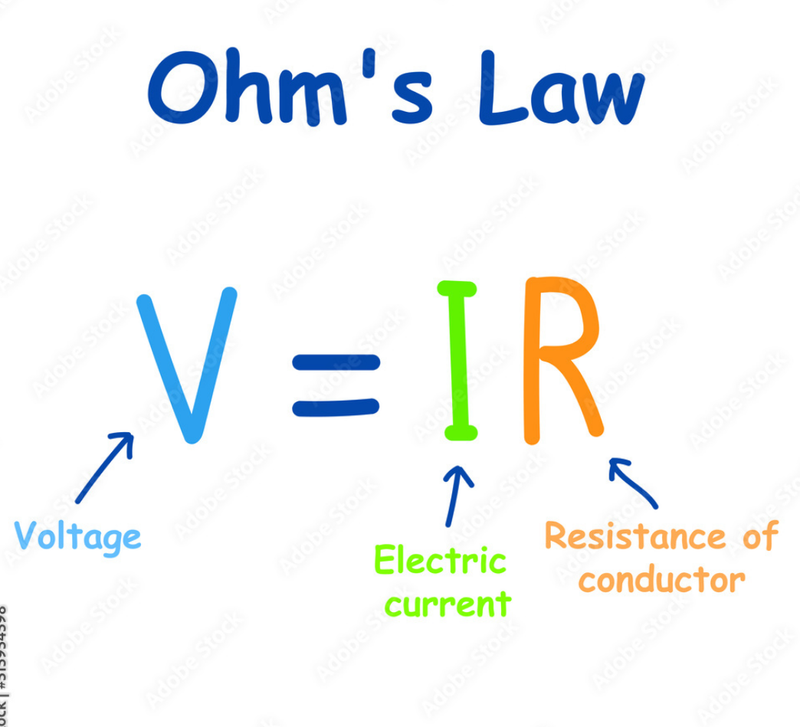
- A resistor that follow's Ohm's law is said to be ohmic.
- In ohmic resistors, current and potential difference are proportional, which means they form a straight line when graphed.
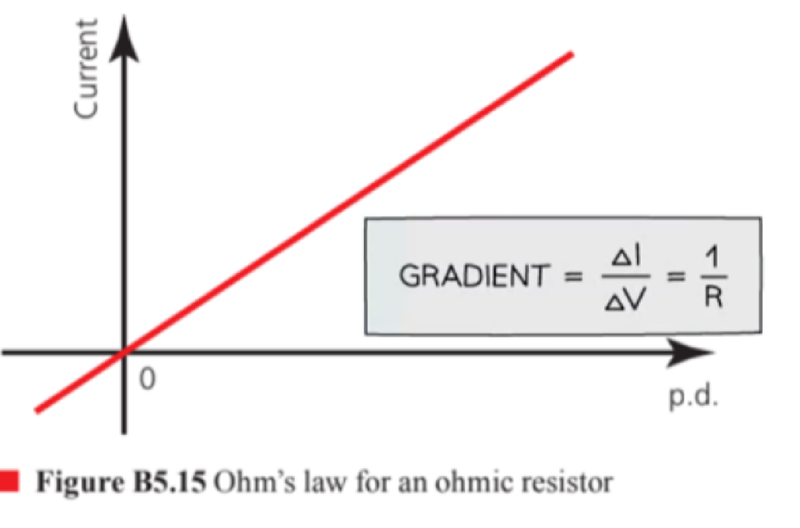
- However, oftentimes the relationship isn't a straight line, as with increased current there is increased temperature.
- This results in the resistance increasing.
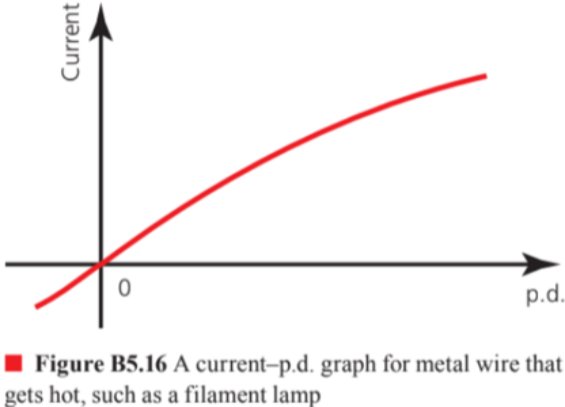
- As you can see in the graphs above, the line continues into the negatives.
- This occurs if the current is in the reverse direction, which can happen if the sides of the battery which the wires are attached to are swapped.
- Diodes are a special component that only lets current go in one direction.

- Here the current is drastically reduced if its not going in the "forward" direction.
Effect of Temperature

- Imagine a wire with a potential difference.
- The electrons will accelerate and start moving to the positive end of the wire.
- However, as they move, they collide with the ions in the wire, causing heat to be released.
- This shows us that current is doing work on the wire, leading to some energy being released as heat.
- The heat leads to particles vibrating more, causing more collisions with electrons and thus more resistance.
- Some inventions utilize this feature, such as filament light bulbs, where current is forced through a thin filament which starts glowing due to the heat.
- While this creates light, it is very inefficient, as a lot of energy is released as heat, which is considered waste.
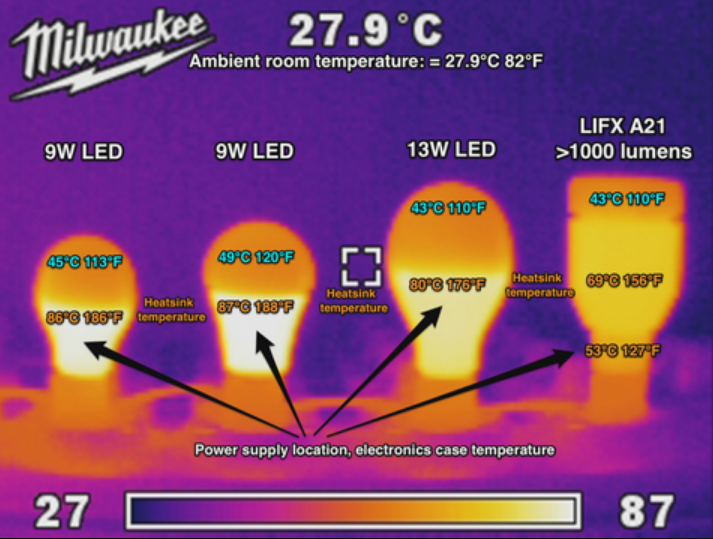
- In many applications, we've switched to more efficient LED bulbs.
- But even these can get quite hot! I wouldn't want to touch a filament light bulb...
Calculating Resistance
- Resistance in a wire is dependent on three factors.
- These are the length of the wire, the cross-sectional area of the wire and the resistivity of the material the wire is made of.
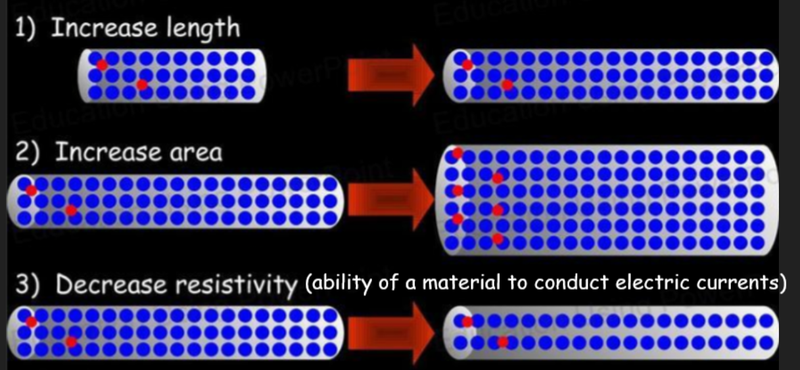
- If the length is increased, electrons travel a longer distance and collide with ions more often, leading to greater resistance.
- If the cross-sectional area is increased, then there is more room for electrons to travel, and resistance is decreased.
- The resistivity is the ability of a material to conduct electric currents.
- Increased resistivity means it is harder for a material to conduct currents, resulting in higher resistance.
- Thus resistance can be found through:

Resisitivity
- Resistivity, ρ is calculated as:

- Resistivity depends on the material the wire is made of.
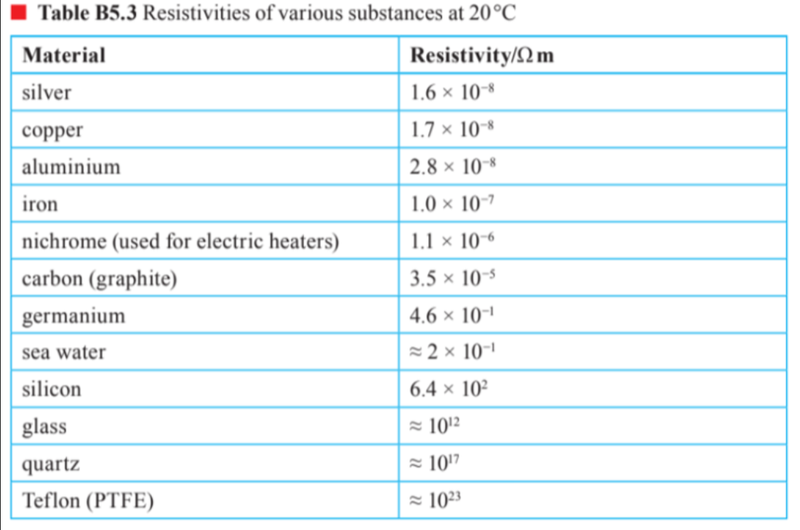
- Resistivity can be found from the resistance to wire length graph:

Resistivity with Temperature
- The resistivity of metals will increase with temperature because of the increased vibrations of metal ions.
- The number of free electrons (charge carriers) in metals will not increase significantly at high temperatures unless the increase in temperature is extreme.
- However, it can be very different for semiconductors and insulators.
- The number of charge carriers (per cubic meter) in non-metals can increase significantly with rising temperatures, so that their resistance can decrease considerably as they get hotter.
- For example, glass is usually described as an insulator, but at 500°C, many types of glass can become good conductors.
Sources
https://en.wikipedia.org/wiki/Georg_Ohm
https://www.lifx.com.au/blogs/the-latest/how-hot-are-led-light-bulbs